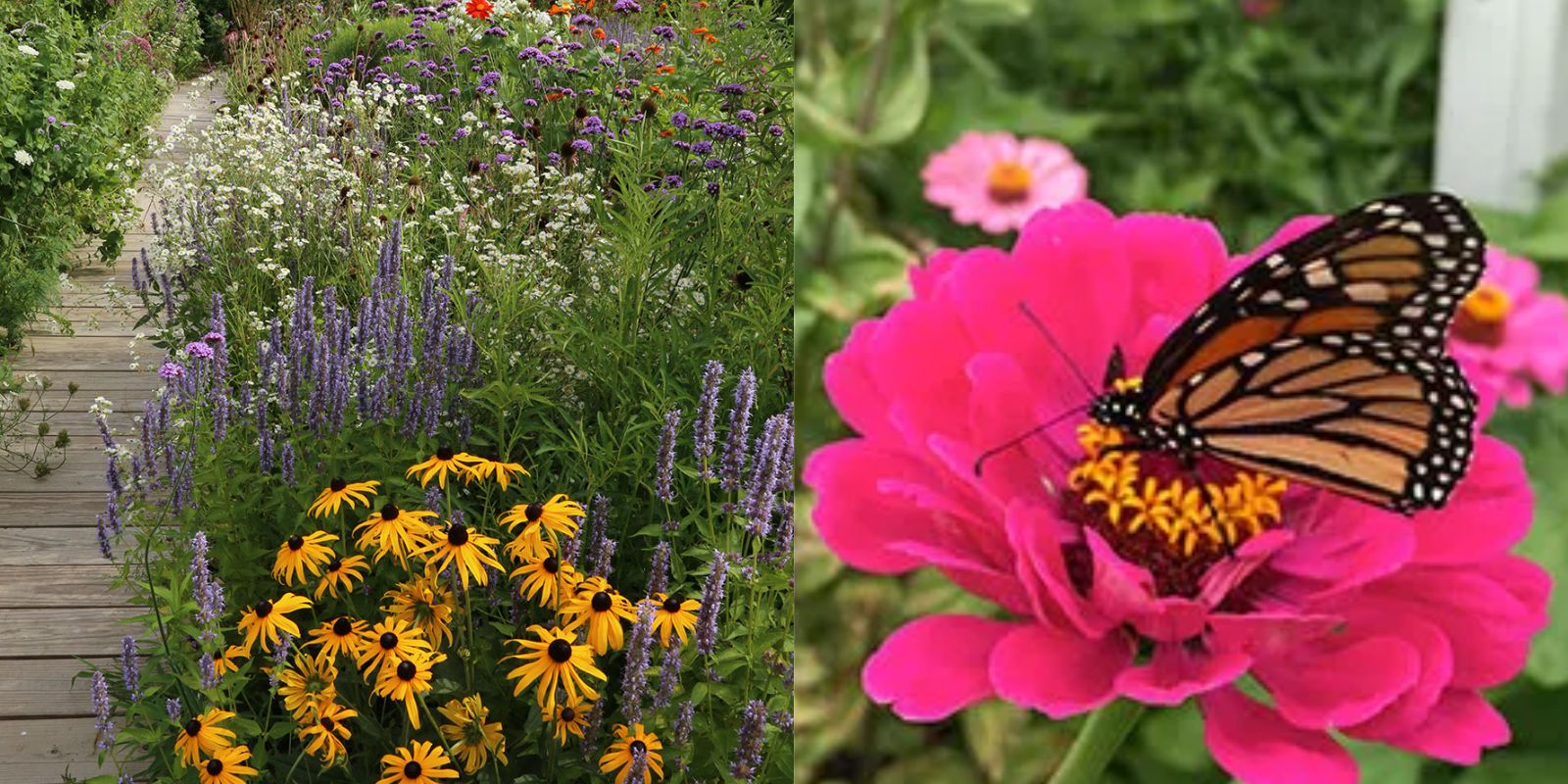Tomatoes and pollinators are crucial to a thriving backyard garden. Tomatoes offer delicious, home-grown fruit, while a well-designed pollinator garden enhances biodiversity and boosts the health of your plants. This guide will walk you through the essential steps to grow tomatoes successfully and create a pollinator-friendly garden that attracts beneficial insects and wildlife.
Growing Tomatoes: Tips for a Bountiful Harvest
Tomatoes are a favorite for many gardeners, offering a rewarding yield with the right care. Follow these steps to ensure a fruitful tomato harvest:
1. Choose the Right Varieties
Selecting the right tomato varieties for your climate and garden space is crucial. There are two main types:
- Determinate Varieties: These are compact plants that produce fruit all at once. They are ideal for small gardens or containers.
- Indeterminate Varieties: These plants continue to grow and produce fruit throughout the growing season. They are well-suited for larger gardens where they can be supported by cages or trellises.
Consider your growing season length, space, and taste preferences when choosing varieties. Some popular choices include ‘Roma’ for sauce, ‘Cherry’ for snacking, and ‘Beefsteak’ for sandwiches.
2. Prepare the Soil
Tomatoes thrive in well-drained, fertile soil. Start by testing your soil’s pH; it should be between 6.0 and 6.8. If necessary, amend the soil with compost or aged manure to improve its structure and fertility. This will provide essential nutrients and ensure proper drainage.
3. Start Seeds Indoors
If you’re starting from seeds, sow them indoors 6-8 weeks before the last expected frost. Use a seed-starting mix and keep the soil warm and moist. Once seedlings emerge, provide them with plenty of light, either from a sunny windowsill or grow lights. Transplant them into larger pots as they grow to ensure they have enough room to develop strong roots.
4. Transplant Carefully
When the outdoor temperatures consistently stay above 50°F (10°C), you can transplant your seedlings. Harden them off by gradually exposing them to outdoor conditions. Plant them deep in the soil, burying a portion of the stem. This promotes stronger root development and helps the plant establish itself better. Space plants 18-24 inches apart to allow for adequate airflow and prevent disease.
5. Water and Fertilize
Tomatoes need consistent moisture to thrive. Water them deeply but infrequently to encourage deep root growth. Mulch around the base of the plants to retain soil moisture and suppress weeds. Use a balanced fertilizer or one specifically formulated for tomatoes to provide essential nutrients. Apply it according to the manufacturer’s instructions to avoid over-fertilization, which can lead to excessive leaf growth at the expense of fruit production.
6. Support Plants
Tomatoes benefit from support structures such as stakes, cages, or trellises. This helps keep the plants upright, reducing the risk of diseases and making it easier to harvest the fruit. Install support structures early to avoid disturbing the roots later in the growing season.
7. Monitor and Prune
Regularly inspect your tomato plants for pests and diseases. Common issues include aphids, whiteflies, and fungal infections. Remove any affected leaves or fruit to prevent the spread of disease. Pruning suckers (the shoots that grow between the main stem and branches) helps direct energy towards fruit production and improves air circulation around the plant.
8. Harvest at the Right Time
Tomatoes are ready to harvest when they have fully developed color and are slightly soft to the touch. Picking them at this stage ensures the best flavor and quality. If frost threatens before your tomatoes ripen, you can harvest green tomatoes and ripen them indoors in a warm, sunny spot.
Creating a Pollinator Garden: Tips and Tricks
A pollinator garden enhances the biodiversity of your backyard and supports the health of your plants by attracting beneficial insects and wildlife. Here’s how to create an effective and attractive pollinator garden:
1. Choose Pollinator-Friendly Plants
Select a diverse range of plants that provide nectar and pollen for various pollinators. Native plants are particularly beneficial as they are well-adapted to your local environment. Include flowering plants that bloom at different times throughout the year to ensure a continuous food source. Some great choices include:
- Flowers: Echinacea, lavender, sunflowers, and marigolds.
- Shrubs: Butterfly bush, viburnum, and holly.
- Trees: Cherry, dogwood, and crabapple.
2. Provide Diverse Habitats
Pollinators need more than just food; they also require shelter and water. Create a varied habitat by including:
- Water Sources: A shallow birdbath or a small pond with stones for insects to land on.
- Nesting Sites: Install bee hotels, provide dead wood or brush piles for nesting sites, and leave some areas of bare soil for ground-nesting bees.
3. Avoid Pesticides
Pesticides can harm pollinators, so opt for natural pest control methods. Encourage beneficial insects like ladybugs and lacewings, use insecticidal soap or neem oil for pest management, and practice integrated pest management (IPM) to minimize chemical use.
4. Create Sunny Spots
Pollinators are attracted to sunny areas where they can easily find and visit flowers. Ensure that your garden has plenty of sunlight and that plants are grouped together to maximize visibility and accessibility for pollinators.
5. Plant in Clusters
Group pollinator-friendly plants together to create large, visible patches of color. This makes it easier for pollinators to find and visit the flowers, improving their foraging efficiency and your garden’s productivity.
Conclusion
By following these comprehensive tips for growing tomatoes and creating a pollinator garden, you can achieve a flourishing and vibrant backyard. Whether you’re looking to enjoy a bountiful tomato harvest or support the health of your local ecosystem, these practices will enhance your gardening experience and contribute to a thriving garden. Embrace these strategies and watch your garden transform into a productive, beautiful space that benefits both you and the pollinators that make it all possible.

